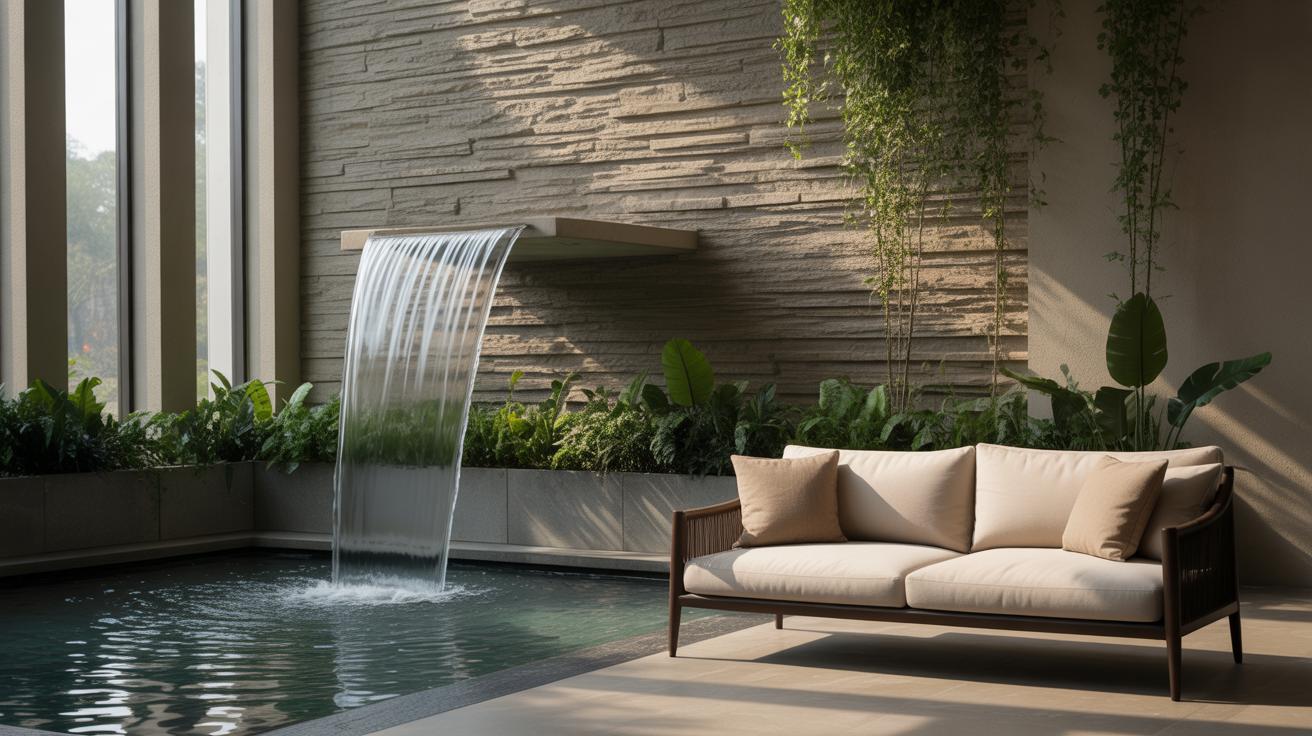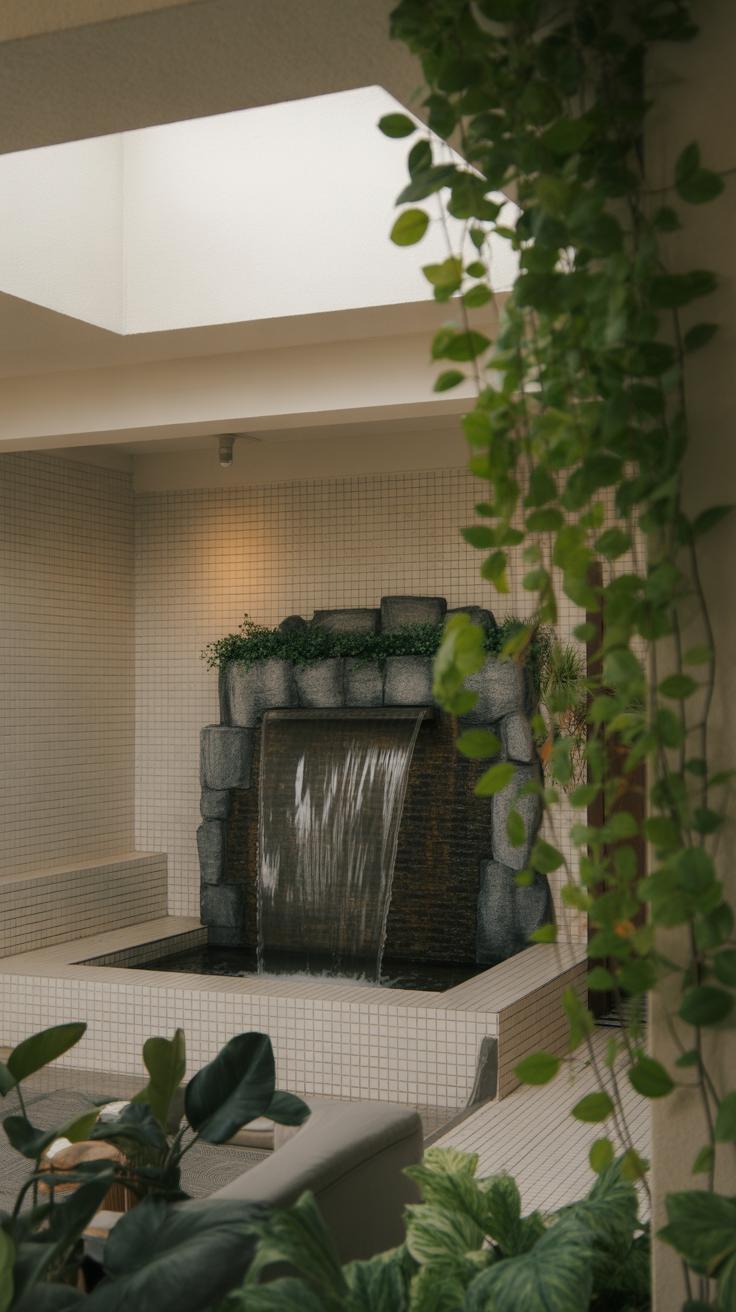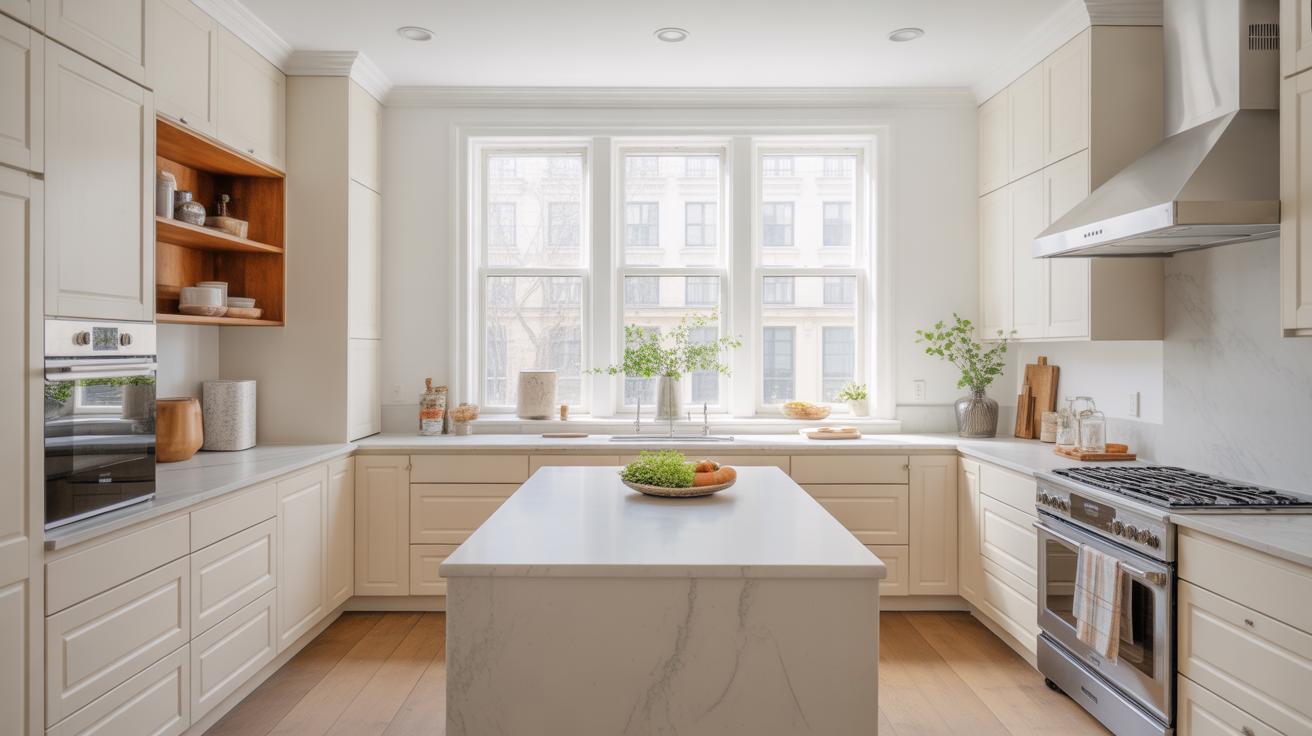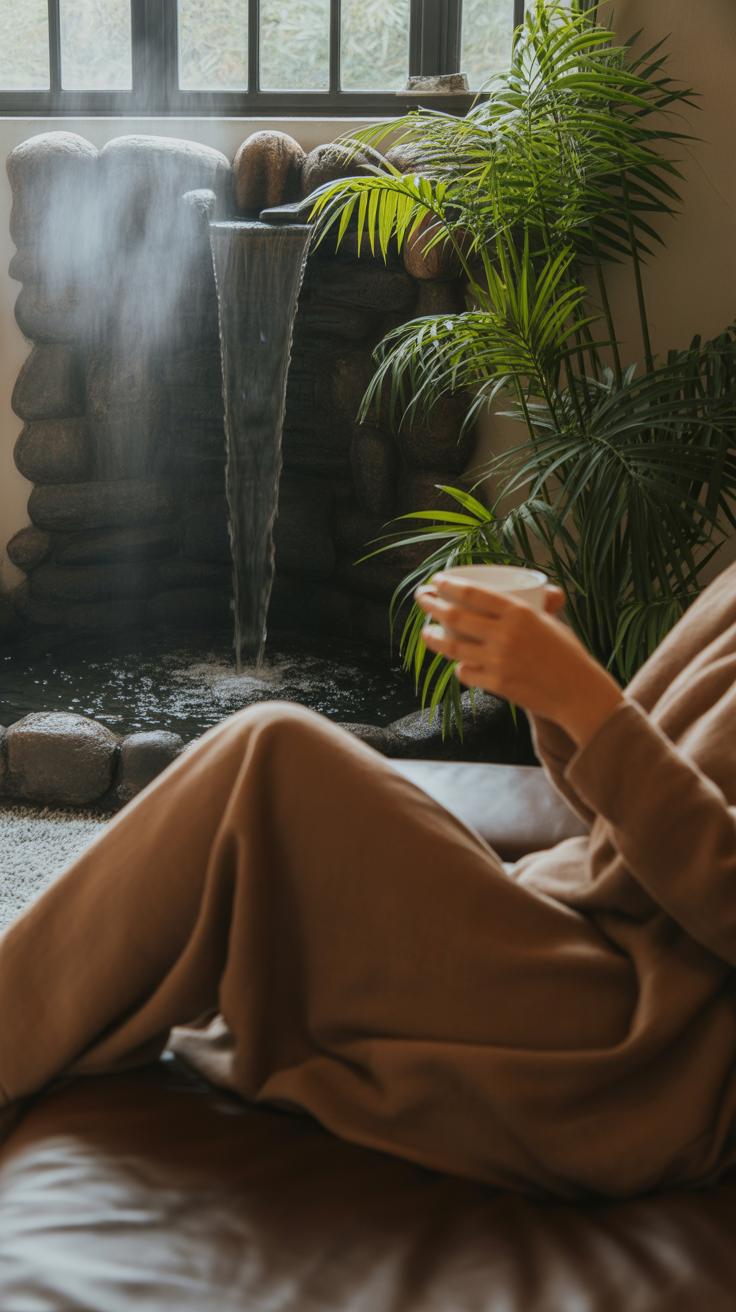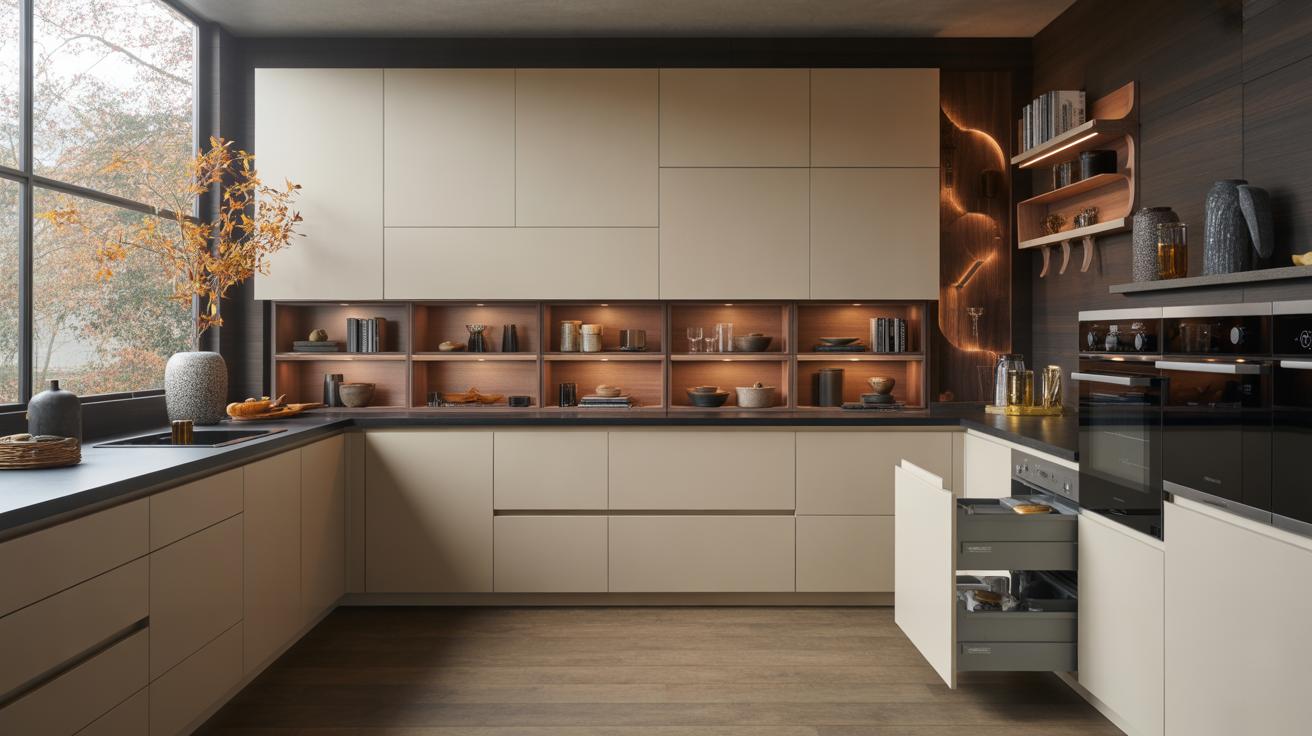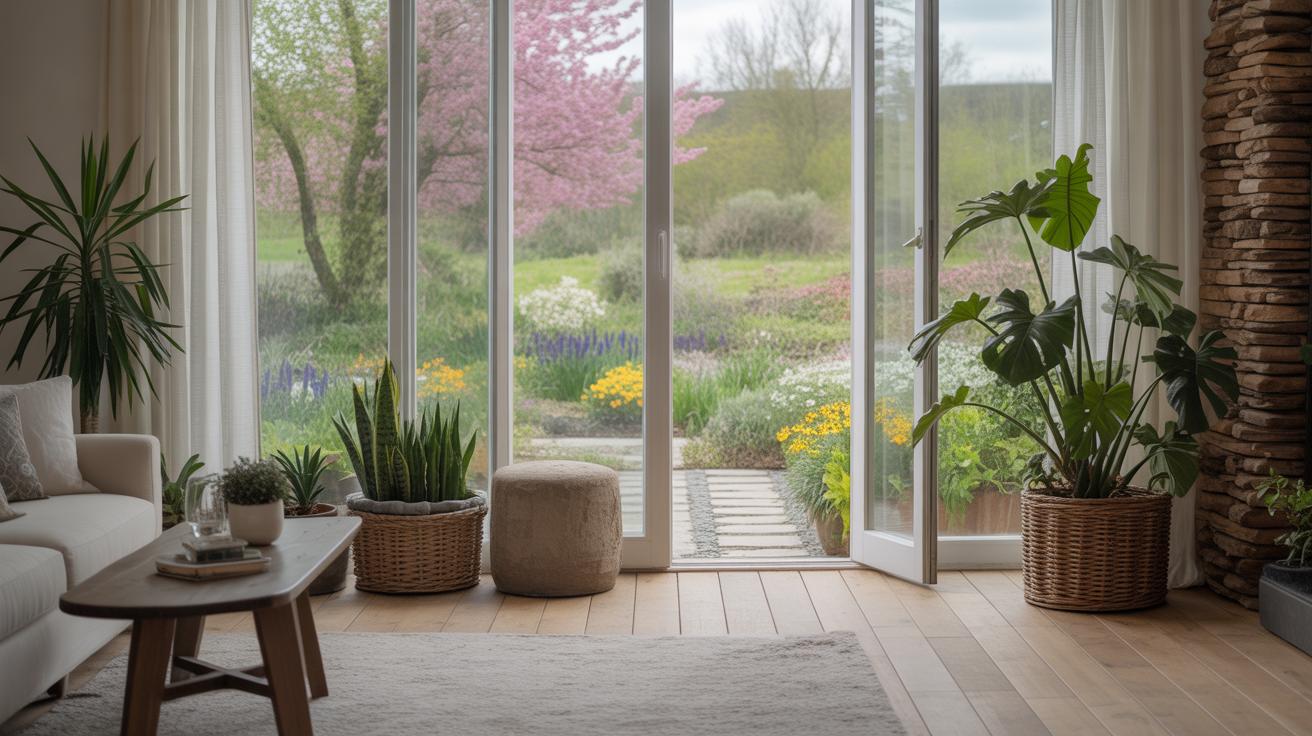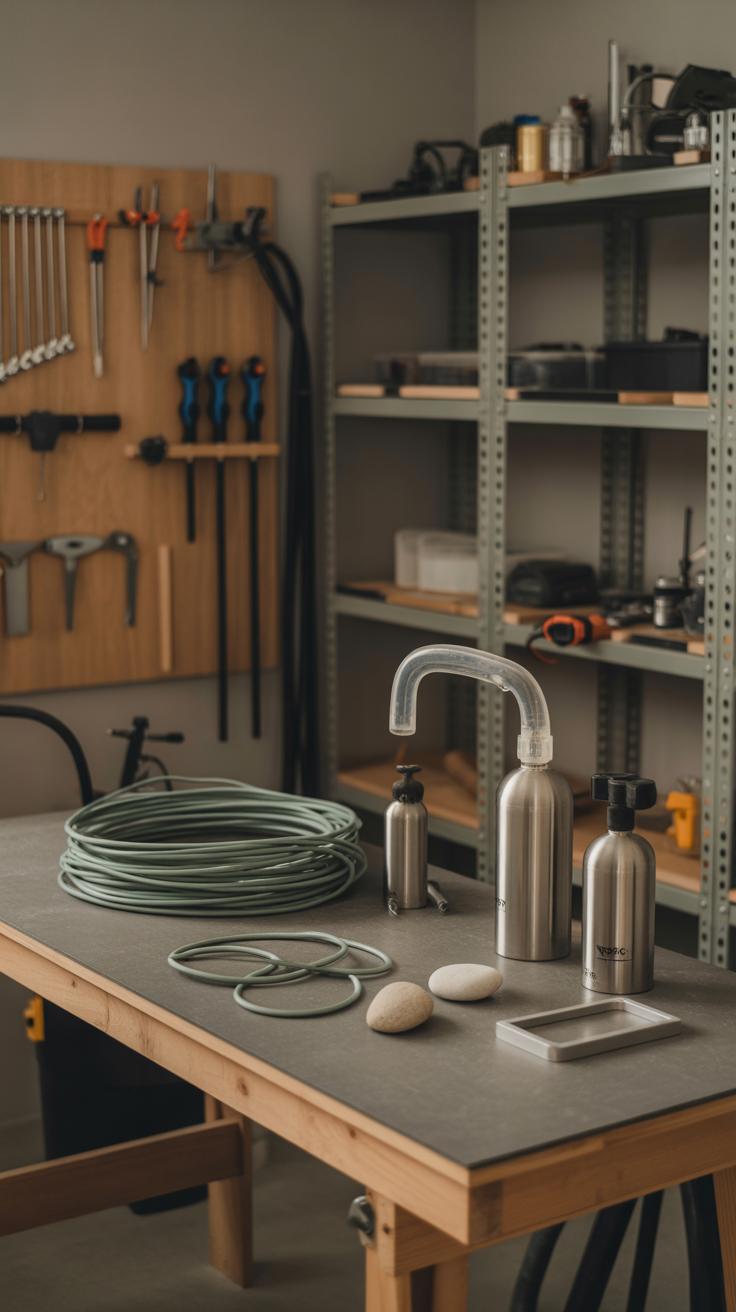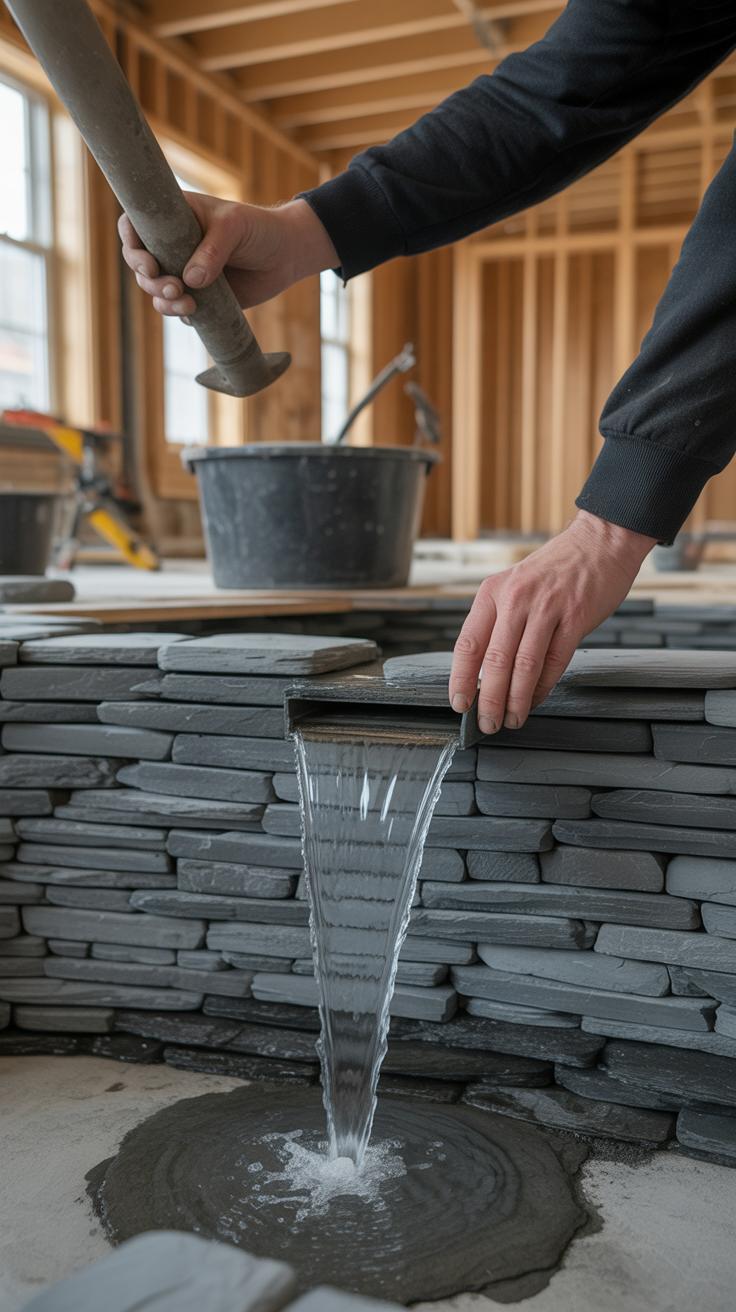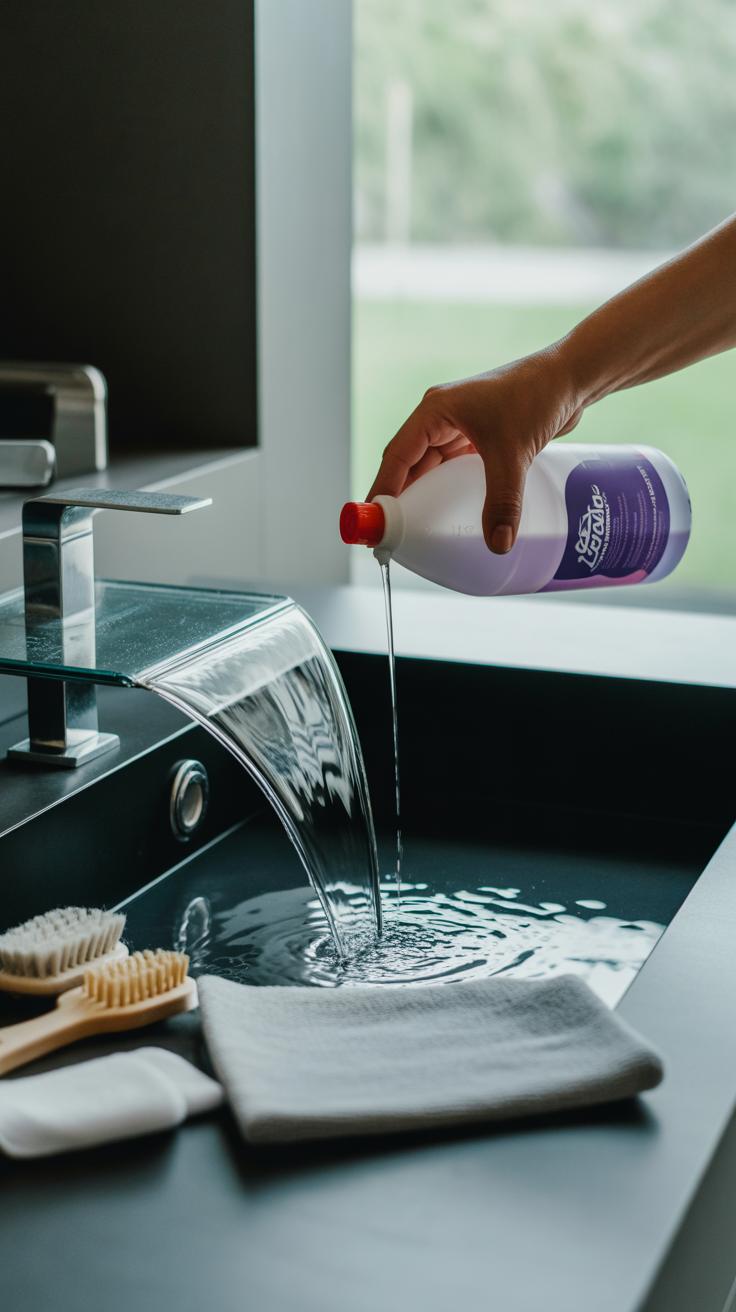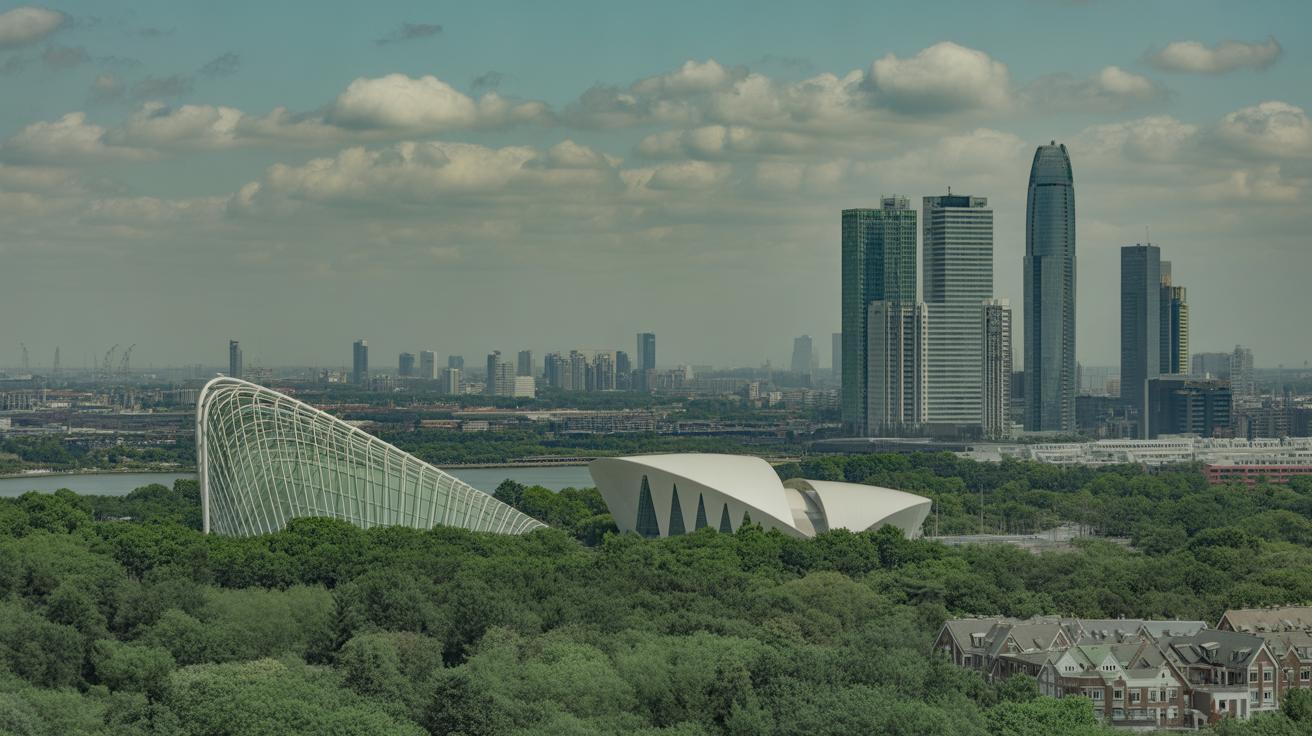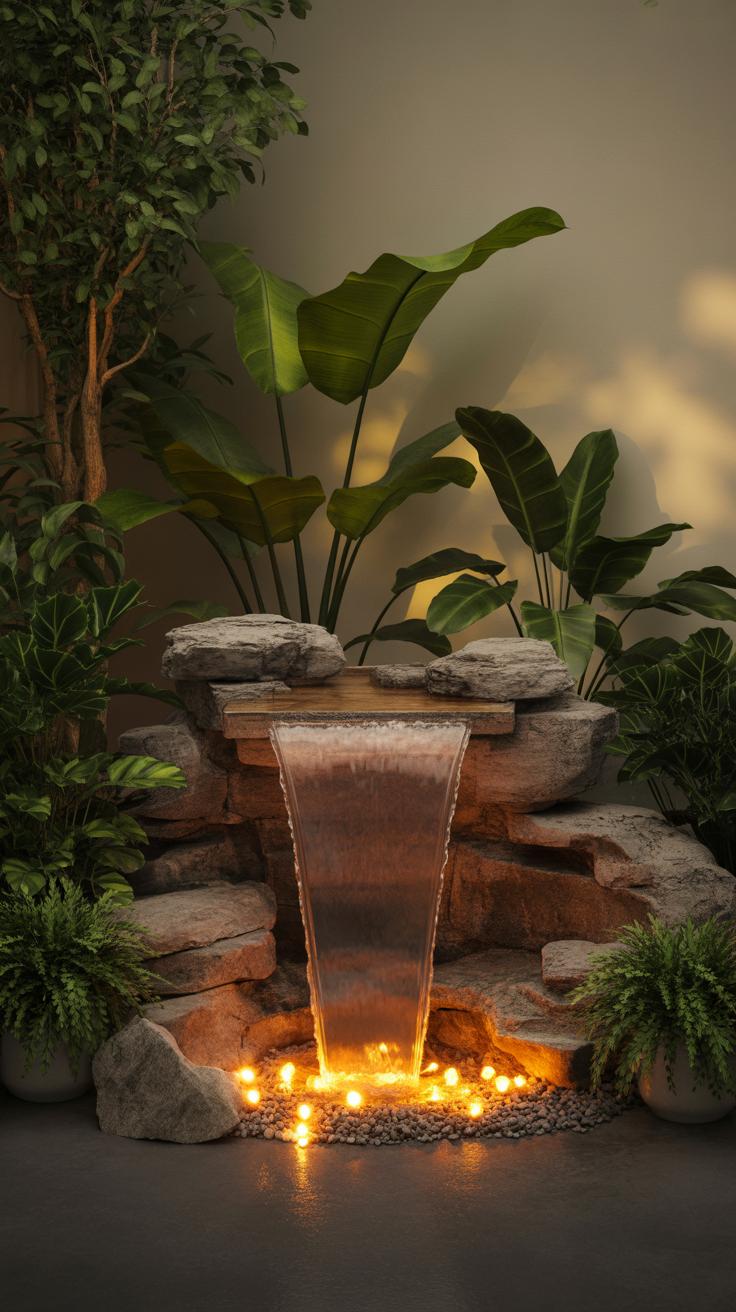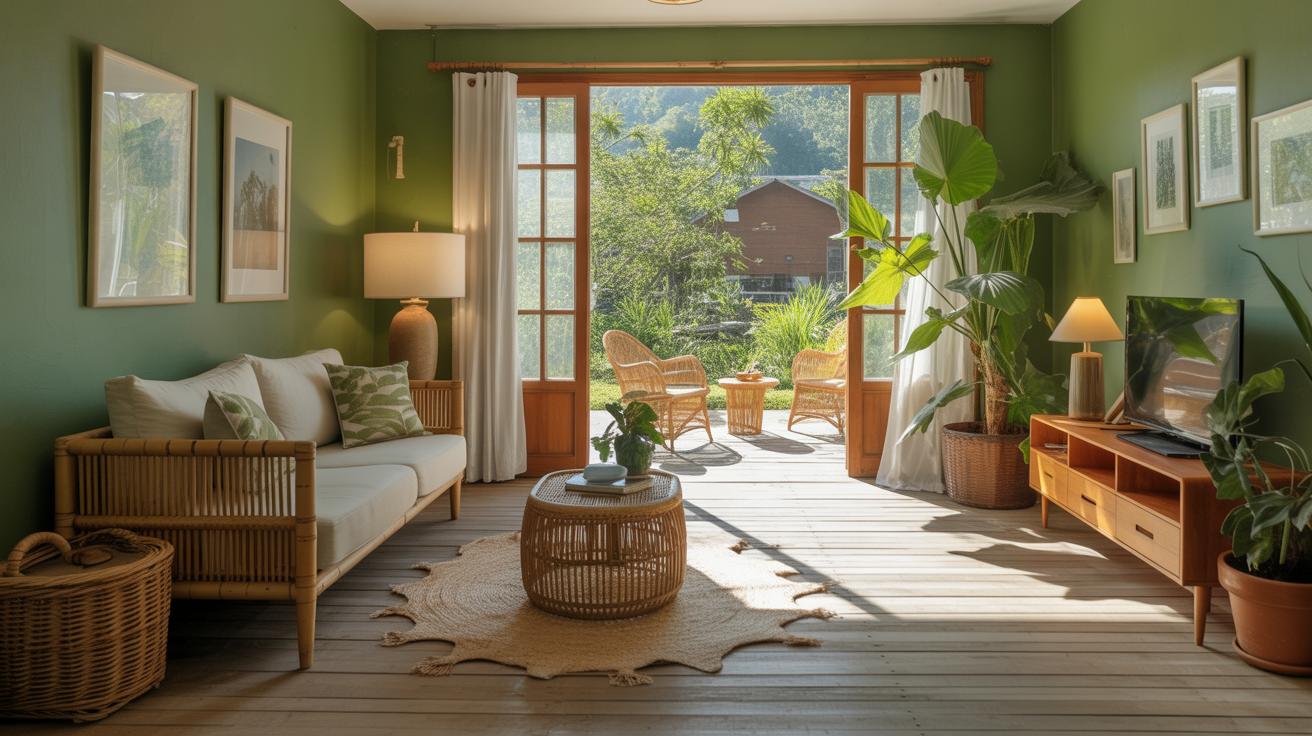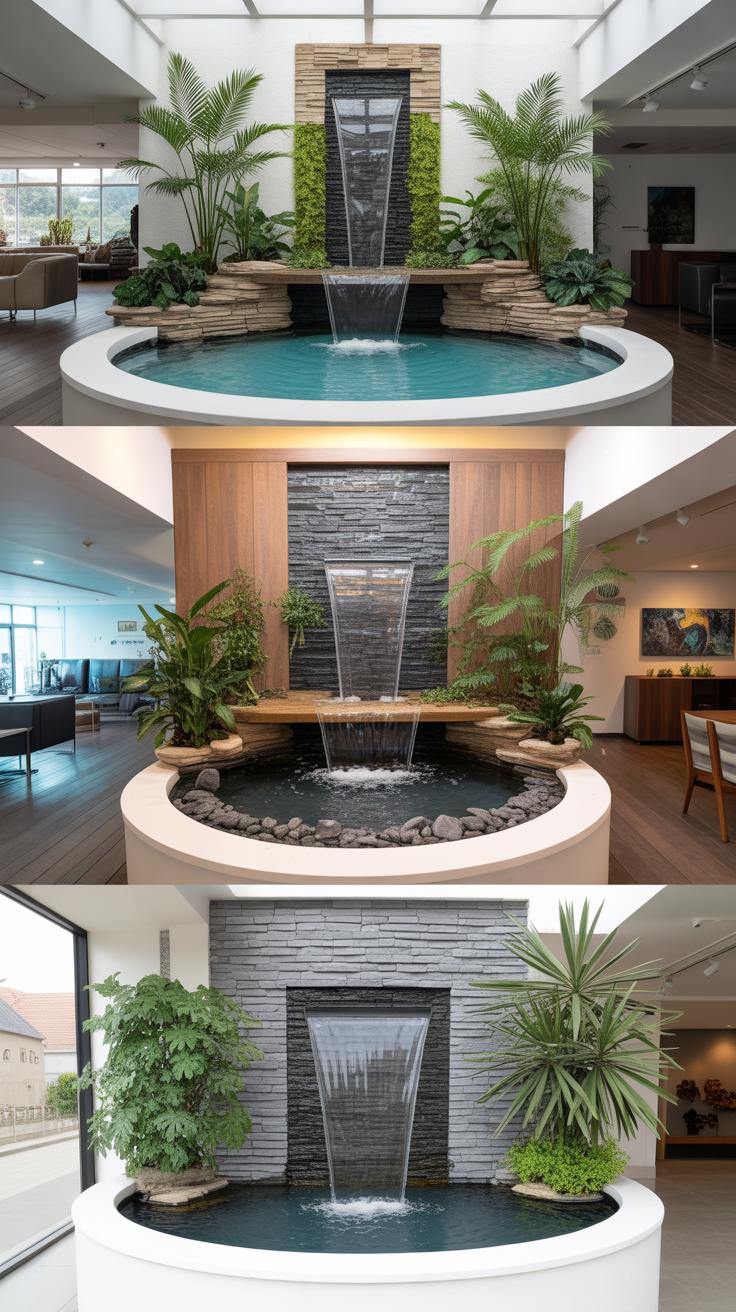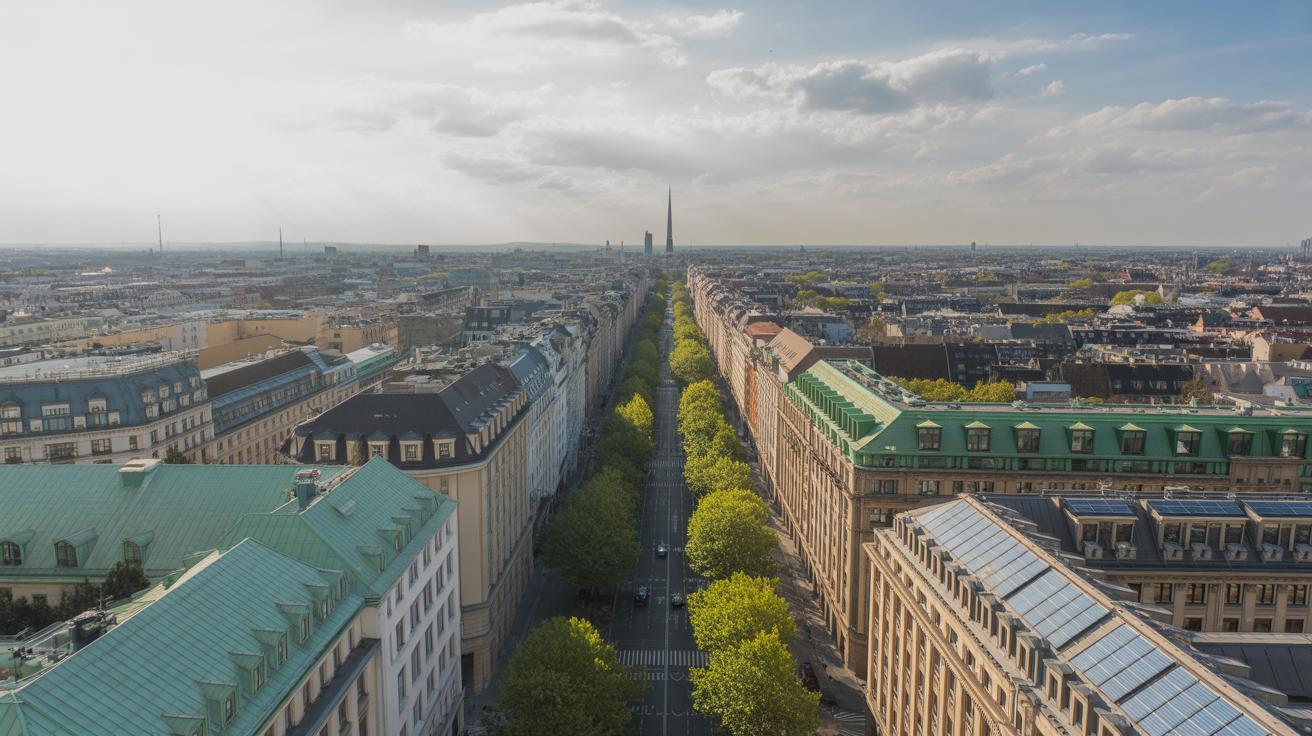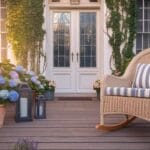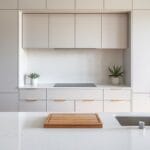Introduction
Designing a tranquil indoor waterfall feature can change your home environment. This article explores how to bring the calming sound and beauty of water inside your living space. You will learn the practical steps to design a waterfall that matches your style and needs.
Indoor waterfalls not only add visual interest but also improve air quality and provide soothing white noise. This guide will show you how to create one that fits your home and helps you relax every day.
Understanding Indoor Waterfalls
Indoor waterfalls are essentially water features designed to bring the essence of a natural waterfall inside your home or building. They replicate the gentle flow and soothing sound of water cascading over rocks or ledges, though obviously scaled to fit indoor spaces. You’ll find these features ranging widely—from small tabletop units that ease into a cozy corner, to wall-sized installations that become the centerpiece of a living room.
Their designs often vary just as much as their sizes. Some aim for a sleek, modern look with smooth stone and metal, while others take a more organic route, mimicking rugged rocks or driftwood. The water movement can be as subtle as a trickle or as bold as a steady stream—depending on what ambiance you’re after.
Common Types
When choosing an indoor waterfall, you’ll encounter several types, each fitting different needs and spaces.
- Wall-mounted waterfalls: These are fixed to a vertical surface, like a living room wall or hallway. The water cascades down smoothly, saving floor space. Perfect if you want a feature that’s both functional and dramatic, without overwhelming the room.
- Tabletop waterfalls: Small and portable, these sit on desks or shelves. Their presence is subtle but calming—ideal for bedrooms, offices, or cozy nooks. They often combine with plants or stones to create mini natural scenes.
- Freestanding waterfalls: These stand alone, often bigger and sometimes resembling sculptural pieces. They can become statement features in entryways or open living areas, blending design and function.
- Fountain-style waterfalls: Mixing a pool or basin with flowing water, these water features offer both visual movement and a soft water sound. They’re versatile; you might place them near seating areas or indoor gardens.
Each type gives you options on where and how to place your waterfall, depending on space, style, and the mural of tranquility you want to build. Have you thought about which type might fit your daily life best? Sometimes, the choice reflects not just space but how much interaction you want with your waterfall—whether it’s a background presence or a focal point you return to often.
Benefits of Indoor Waterfalls
Indoor waterfalls do more than just look nice. They actually help add moisture to dry air, which can make a noticeable difference, especially in winter months or in homes with forced heating. Dry air often leads to irritated skin or scratchy throats, so a waterfall quietly working in a corner might ease those discomforts without you really thinking about it.
There’s also the subtle sound—the gentle, constant rush of water. It creates a kind of white noise that can drown out distracting sounds or silence. Many people find that this background hum helps them relax, concentrate, or even sleep better. I’ve noticed that even after a long, stressful day, the sound calms my mind more than just silence does.
On the aesthetic side, the sight of flowing water naturally changes the room’s atmosphere. It’s peaceful, though not in an expected way—you might find your thoughts slowing or wandering. Stress seems to slip away, or become less pressing. The look alone can add a quiet elegance or a fresh feel, making your home more inviting, but without feeling overdone or too showy.
- Improves humidity, especially useful in dry climates or seasons
- Creates white noise that can mask distractions and promote relaxation
- Enhances mood by soothing the mind with motion and sound
- Adds a subtle style element that can tie a room together or fill an empty corner
Would you say these practical benefits make having an indoor waterfall worth the effort? Maybe. But for me, it’s the combination of air, sound, and sight that changes how a space feels—sometimes in ways you only realize after living with it a little while.
Planning Your Indoor Waterfall
When deciding on an indoor waterfall, think carefully about size, location, and style. The waterfall shouldn’t overpower the room or feel like an afterthought. You want it to feel naturally part of the space, though sometimes it takes a little trial and error to find the right balance.
Choosing the right size depends a lot on your room’s dimensions and purpose. A big waterfall in a small room might feel overwhelming — or even noisy. Smaller waterfalls can work well in cozy corners or entryways, while larger walls of flowing water suit bigger living areas or open spaces. Sometimes it’s hard to predict how the sound will carry until you actually have it running, so try imagining the volume and scale beforehand.
Choosing the Location
Pick a spot with enough room not just for the feature, but also for maintenance and water circulation. Electrical outlets nearby are essential since pumps need power, and running cords across the floor looks messy and might trip someone.
Visibility matters, too. Usually, placing the waterfall where you’ll see it often — like near seating areas or hallways — makes it more enjoyable. Yet, some folks prefer a quieter corner for a meditative effect. Think about how you naturally move through the space and where the waterfall’s sound would lift or drown out other noise.
Selecting the Style
Style selection should reflect both the room’s look and your own taste. Modern waterfalls often favor clean lines, minimal stone or concrete bases, and sleek glass or metal elements. They give a sense of calm through simplicity. Traditional designs might use natural rocks, wood elements, or tiered basins — they feel more organic, maybe even a bit rustic. Either way, matching materials and colors in the room helps the waterfall feel like part of the home rather than just a gadget.
Sometimes, mixing styles produces interesting results too. Maybe a modern waterfall with a classic-looking stone base. It depends on your comfort with blending and what atmosphere you want. Ask yourself: Is this for show, or for quiet relaxation? Does it complement the room, or is it the centerpiece?
Materials and Equipment Needed
Creating an indoor waterfall needs some specific materials and tools to get started. Water pumps are at the heart of it all. You’ll want a submersible pump that fits your waterfall’s size—too weak, and the water won’t flow nicely; too strong, and it could splash everywhere. For most indoor features, pumps ranging from 200 to 500 gallons per hour work well, but sizing depends on the height and width of your waterfall.
There’s also the reservoir, a container that holds the water and lets the pump recycle it continuously. This keeps the system closed and avoids constant refills. Often, hidden basins or tubs make good reservoirs. The size should roughly match the volume of water your feature will circulate. Sometimes, people underestimate this, and then the pump struggles or runs dry.
Waterproofing is a must. Materials like pond liners, waterproof sealants, or specialized paints ensure the structure holds water without leaks or damage. For surfaces, natural or manufactured rocks and smooth tiles work well—they provide texture and help hide the liner beneath. Containers made of resin, ceramic, or stainless steel can also serve as bases or reservoirs, but make sure they’re water-safe and won’t degrade.
When you gather your materials, think about durability and how each piece interacts. The pump, reservoir, and waterproofing need to work as one. I remember once trying a decorative basin that wasn’t fully sealed—it ended up seeping slowly, and it took days to figure out. Small missteps like that can cause big headaches.
- Submersible water pump (200-500 GPH depending on size)
- Water reservoir or basin sized to water volume
- Pond liner or waterproof sealant for watertight structure
- Natural rocks, tiles, or water-safe decorative stones
- Containers made of ceramic, resin, or stainless steel
- Basic tools: silicone gun, waterproof adhesive, tubing, level
Building the Waterfall Structure
Constructing the Base
Start with a firm, flat surface for your base. You need something that holds water firmly without leaking or tipping. A shallow tub or a container lined with a waterproof membrane works well. Think about the weight—when filled, water can be surprisingly heavy. Use sturdy materials like plywood sealed with waterproof paint or plastic sheets designed for ponds. It doesn’t have to be perfect, but if the base is flimsy, your entire waterfall could become unstable over time.
Once the container is set, add a layer of gravel or aquarium rocks at the bottom. This helps with drainage and prevents water from pooling unevenly. You might want to test for leaks by filling it with water and letting it sit for a day. Catching mistakes early will save headaches later.
Setting the Water Flow
Next, place your pump at the bottom of the base. Consider a model with adjustable flow rates; this lets you control how hard the water falls. Connect tubing to the pump, directing it to the top of your waterfall. Run the tubing discreetly behind your structure or under rocks so it doesn’t distract from the natural look.
The water’s path shapes both sound and visual appeal. Try layering flat stones or smooth pebbles so water trickles over multiple surfaces rather than a single drop. This distributes sound and creates lighter, more varied splashes. I found that small ledges made from slate really soften the noise without killing flow.
Finally, experiment with how you angle the stones and position the pump until the water flows steadily but gently. You want a peaceful murmur, not a roaring cascade—although if you prefer louder, just turn the pump up. You may notice the water doesn’t always flow perfectly at first; subtle shifts in positioning make all the difference.
Maintaining Your Indoor Waterfall
Caring for your indoor waterfall goes beyond just setting it up. If you want it to stay peaceful and running smoothly, regular upkeep is key. Think about it like tending a small garden—neglect it too long, and you’ll notice algae creeping in or the pump struggling to keep water flowing.
Start with the pump. It’s the heart of your waterfall, but it can collect dirt and mineral deposits over time. Try removing it every couple of weeks. Rinse it thoroughly under warm water, and gently scrub away any buildup on the intake and impeller with a soft brush or cloth. Avoid harsh chemicals here—they might harm the pump or the water quality.
Next, pay attention to the surfaces of your waterfall. Wipe down stones, glass, or ceramic edges with a sponge dipped in mild soap and water. This will prevent chalky mineral stains or slimy algae from settling. You might have to do this monthly depending on your home’s humidity and water quality.
When it comes to water quality, you’ve got a few options to keep things clear. Changing the water regularly—every two to three weeks or when it looks cloudy—helps flush out impurities. Some people find mild water treatments helpful too. Adding a small amount of a gentle algaecide or a natural clarifier can keep water clarity in check. Just be cautious not to overdo it; too many chemicals can affect the atmosphere you’re trying to create.
One thing I always notice is how quick algae can return if you skip these routines. So, keeping an eye on water color and surface texture can save a lot of troubleshooting later. Are you comfortable with checking your waterfall once a week? That’s usually enough to catch any early signs of buildup before it becomes a bigger issue.
Enhancing Your Indoor Waterfall
Lighting can make or break the mood around your indoor waterfall. You might try soft LED strips tucked behind rocks or under ledges to emphasize water movement. Color-changing lights offer flexibility—cool blues for calm evenings, warmer tones if you want a cozy feel. I once added a small spotlight angled to catch the water’s flow and noticed how it created subtle, dancing shadows on nearby walls. It wasn’t perfect, but it did add an unexpected layer of interest.
Plants play a big role too. Choose moisture-loving varieties like ferns, peace lilies, or mosses to complement the damp environment. Sometimes, I find a single tall plant near the base adds balance without cluttering the space. Rocks can anchor the scene, but don’t overdo it. A handful of smooth stones or river rocks scattered around the pool or basin keeps things natural without feeling forced.
Furniture or seating nearby can invite people to pause and appreciate the sound and sight of the waterfall. A simple wooden bench, perhaps paired with a soft cushion, works fine. If space allows, a small side table to hold a book or a cup of tea makes the area more inviting. But remember, less is often more here. You want the waterfall to remain the centerpiece, not overwhelmed by too much decoration.
Examples of Indoor Waterfall Designs
Small and Simple Designs
For smaller spaces like apartments or offices, indoor waterfalls often need to be more compact and straightforward. A popular choice is the tabletop waterfall, where water gently flows over stacked stones or glass panels. These designs fit on desks or shelves, making them easy to set up and move around. What’s great about these is how minimal they can be while still adding that calming sound of trickling water.
Another simple idea is a small wall-mounted waterfall. These take up little floor space but create a nice visual element. Often made from ceramic or acrylic, water flows down a flat surface into a shallow basin. You don’t need complex plumbing—usually just a hidden pump recirculating the water.
These smaller designs work well because they bring water indoors without needing a big renovation or room. If you live somewhere tight, it’s about creating a peaceful spot without overwhelming the space. The water’s movement attracts the eye and soothes the mind, even if it’s just a few inches wide.
Large and Complex Installations
On the other end, large indoor waterfalls can become a dramatic part of your home’s design. Take, for example, wall-mounted waterfalls that stretch from floor to ceiling. These often incorporate natural stones or textured panels, where water cascades down in broad sheets or rivulets. Such installations require careful planning of water flow and sound control to avoid excess noise or splashing.
Then there’s the Rain Vortex in Singapore’s Jewel Changi Airport. This is a massive, multi-story indoor waterfall that seems almost otherworldly. It serves as an architectural centerpiece and air cooler, combining nature with engineering on a grand scale. Although it’s not something you’d recreate at home, the idea that water can be integrated into indoor spaces at any scale is inspiring.
Large waterfalls do more than decorate; they shape the environment. The size transforms how you experience the space, making you pause or feel enveloped by nature’s motion inside. Some might find them overwhelming, while others see a chance to create a breathtaking centerpiece. It’s really about what feels right, I think.
Conclusions
Indoor waterfalls bring several benefits such as peace, humid air, and attractive decor. By planning carefully, choosing the right location, and using proper materials, you can build a feature that adds comfort to your space.
Use the ideas and tips shared here to begin designing your indoor waterfall. It can be a rewarding project that offers lasting enjoyment and a calm atmosphere in your home.

